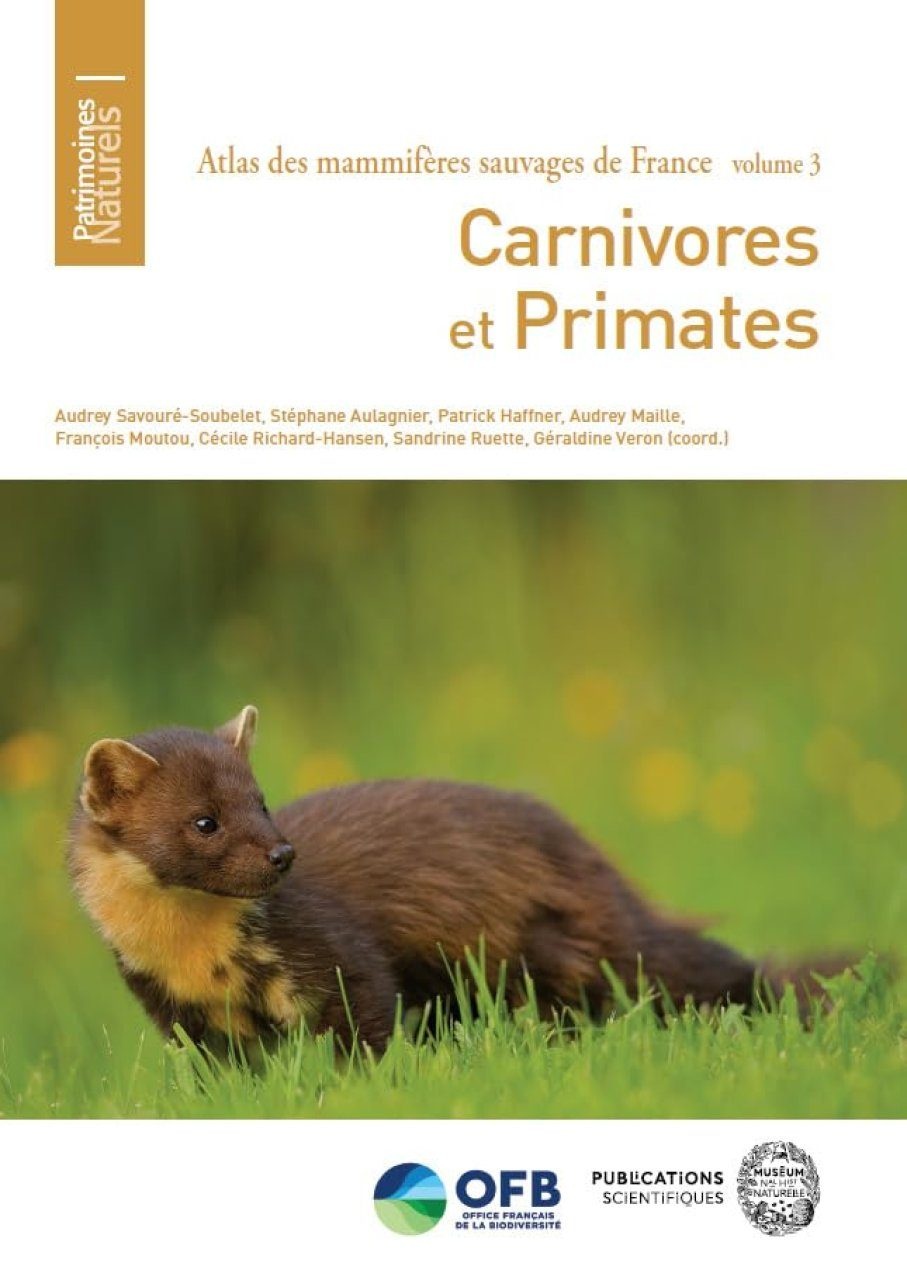| Authors | Audrey Savouré-Soubelet, Stéphane Aulagnier, Patrick Haffner, Audrey Maille, François Moutou, Cécile Richard-Hansen, Sandrine Ruette, Géraldine Veron |
| Language | French |
| ISBN | 9782383270034 |
| Publisher | Muséum National d'Histoire Naturelle |
| Pages | 616 |
| Size30 | 30,5 x 21,5 x 4 cm |
| Format | Hardcover |
| Images | Colour images and distribution maps |
| Year published | 2024 |
After focusing on the 71 marine mammals (volume 1) and the 28 ungulates and lagomorphs (volume 2) present in France, the third volume of the Atlas des Mammifères Sauvages is devoted to carnivores and primates.
The 33 carnivores present in France are often the subject of passionate debate as predators can interfere with human activities. They are therefore subject to varied protection and legal statuses. Some are classified as protected species, sometimes strictly, others are subject to legal destruction of individuals, yet others are included on the list of game species, or even among the species likely to cause damage, and, finally, some are considered invasive alien species. For all of them, we have nevertheless obtained a significant amount of knowledge in recent years thanks in particular to the establishment of national monitoring networks, national action plans and the activities of local associations. Conversely, for primates, no national synthesis exists today although the French territory is home to ten species (eight in Guyana, one introduced to the Antilles and one introduced to Mayotte) and several studies have been carried out locally.
Based on more than 370,000 data points acquired between 2000 and 2020 and involving the participation of 76 editors, this volume represents a unique and essential decision-making tool to improve the cohabitation of humans with these species. Managers and administrations will find in this work all the information and local specificities on the carnivores and primates populating their territory, whether it be the threats they face, their impacts or even the actions or studies implemented locally. They will also be able to find, in specific monographs, the conservation issues for each species. Likewise, scientists and naturalists will be able to access current information on the distribution of these 43 species, their biology and ecology, the state and trends of evolution of their populations, as well as ongoing research work.
As with the previous volumes, this work could not have been produced without the mobilization of many experts and organisations who agreed to contribute by sharing their data and knowledge.

































